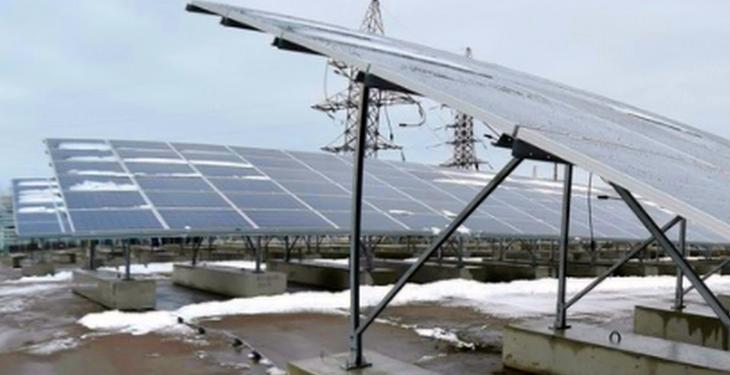A hundred yards from the rusting ruins at the site of the world’s worst nuclear disaster, a gossamer array of almost 4,000 photovoltaic panels sits atop a thick concrete slab capping a grave of radioactive waste.
When it comes to clean energy, it’s hard to think of a less likely place than Ukraine’s infamous Chernobyl nuclear plant. But final preparations are being made to generate electricity again, this time using safer power from the sun.
It’s part of the country’s plan to reduce dependency on increasingly unreliable Russian gas deliveries and disrupted coal supplies. Dominated by the 300 foot (91 meter) high grey containment structure that entombs the destroyed reactor, Chernobyl’s exclusion zone is almost the size of Luxembourg and the authorities say it’s vital to Ukraine’s push to double its solar energy output, according to Bloomberg.
Solar Chernobyl SPP is at the vanguard of the latest experiment to give a place synonymous with catastrophe a new life after previous efforts failed. The company is a partnership between Ukrainian entrepreneur Yevgen Variagin’s Rodina Energy Group and Hamburg-based Enerparc AG.
“Our idea was to utilize the waste land that’s unsuitable for anything else and somehow develop the investment project and make business in Chernobyl,” Variagin, who was a 10-year-old schoolboy in Kiev when the disaster struck in April 1986, said as he showed off the solar panels installed over the past month.
The Chernobyl power plant was once the cornerstone of the Soviet Union’s nuclear strategy in Ukraine.
Then the fourth reactor exploded, blanketing the area with radiation that killed 49 people outright and left thousands more with lingering, often fatal health problems. The zone is dotted with abandoned villages and former dairy farms slowly being swallowed up by the dense forest.
Pripyat, once a bustling Soviet-designed town of 50,000 people housing plant workers and their families, is now an eerie tourist destination with collapsing apartment blocks, a decrepit hotel and an empty supermarket. Behind a stretch of buildings with broken windows and peeling facades, an abandoned amusement park is slowly decomposing.
“The reality is some of the land will be abandoned for generations, even a million years,” said Yevgen Gucharenko, an agency employee who accompanies tour groups and other visitors. He was 13 when the reactor exploded. “But there are some clean areas, where it’s safe enough for short visits.”
That’s where it fits in to the grand renewable energy plan. Ukraine wants to boost solar, hydro, wind, biomass and biogas output to 11 percent of power generation by 2020, said Yulia Kovaliv, the head of Ukraine’s National Investment Council.
With a cumulative capacity of around 1.2 gigawatts of solar power by the end of 2017, Ukraine already is a “significant player” at par with European countries such as Austria, according to Bloomberg Intelligence analyst James Evans.
The goal now is to lure companies to generate another 1.2 gigawatts of solar energy on the site of the devastation, enough to power 200,000 homes.
